Open networks and switches without OS
How is the network market different from the server? On the server market there is a choice. A server from a global brand, a server from a local brand, a server from a platform manufacturer, a self-assembled server - there is an option for every taste and color.
The network market (we are talking about an enterprise) is much more conservative. There are a couple of dominant companies, there are all the rest. Each vendor has its own OS, its own set of dearly beloved and cherished bugs, usual workarounds for them, its own command line (although some have combined with a single CLI). All yours.
Some time ago there was an opinion that the market lacks Linux to speed up development.
')

The server can be purchased with the OS and without, you can choose the configuration for the requirements of the applications, you can choose any OS distribution kit or build your own. The choice is rich, and this is what made it possible to develop a new business model, which formed the basis for the success of many Internet companies. A lot of software development appeared, the Open Compute project was launched to optimize server hardware
And what happened in the network equipment? How were switches managed almost 20 years ago and how are they now?
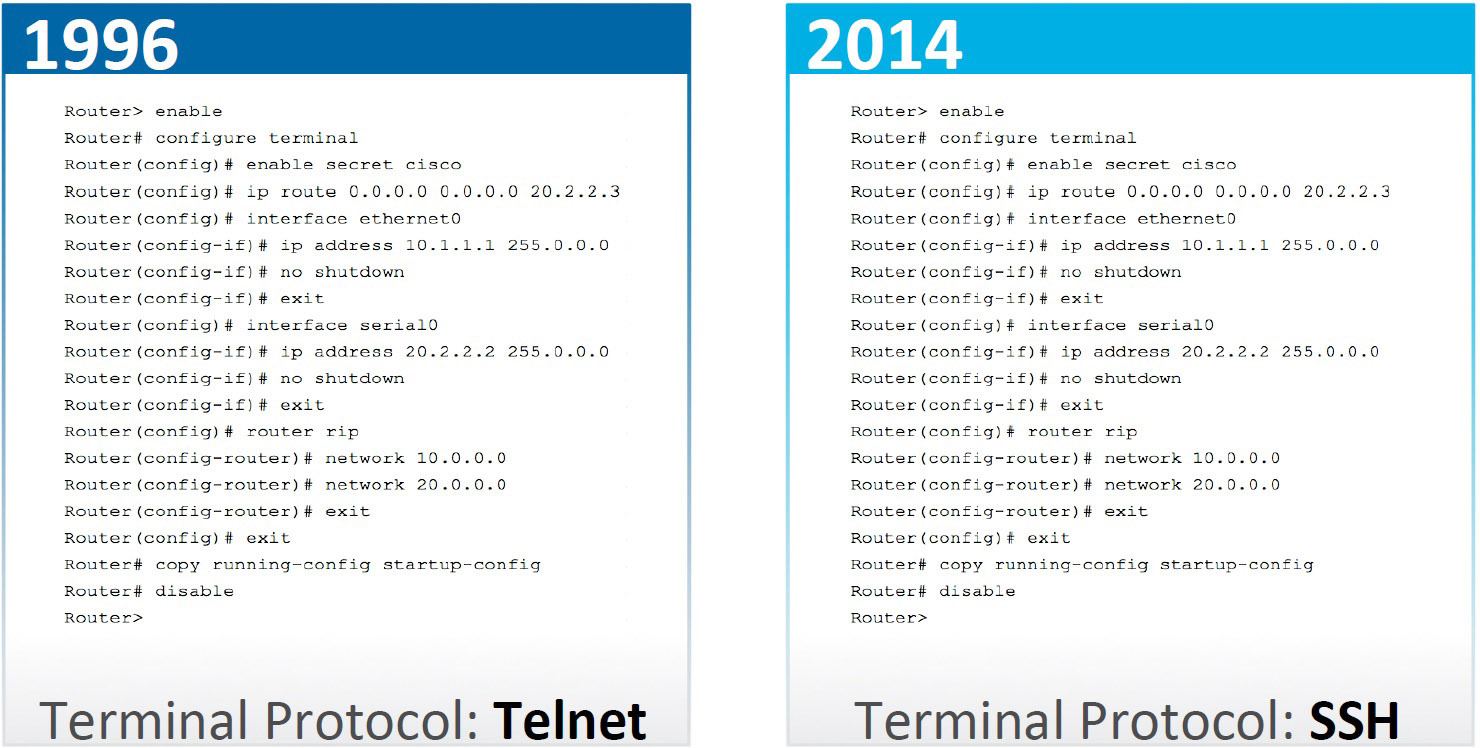
Nothing has changed
Years go by, and there has been no change. Yes, now the movement towards OpenFlow and SDN has begun, but network vendors continue to offer private options under the name of open. Many vendors develop their OS based on Linux, but nobody uses just Linux.
In 2010, a couple of startups, BigSwitch Networks and Cumulus Networks, were formed to develop such a solution. In 2012, Pica8 joined them.

Network operating system
Obvious difficulties on this path are the need to create an image for a specific switch and complex installation methods, because each switch can have its own loader.
Difficult installation methods
To circumvent this limitation, the Open Network Installation Environment (ONIE) was developed. In fact, this is a pre-installed microlenux, which, when first loaded, searches for a source to install a full-fledged network OS (NOS).
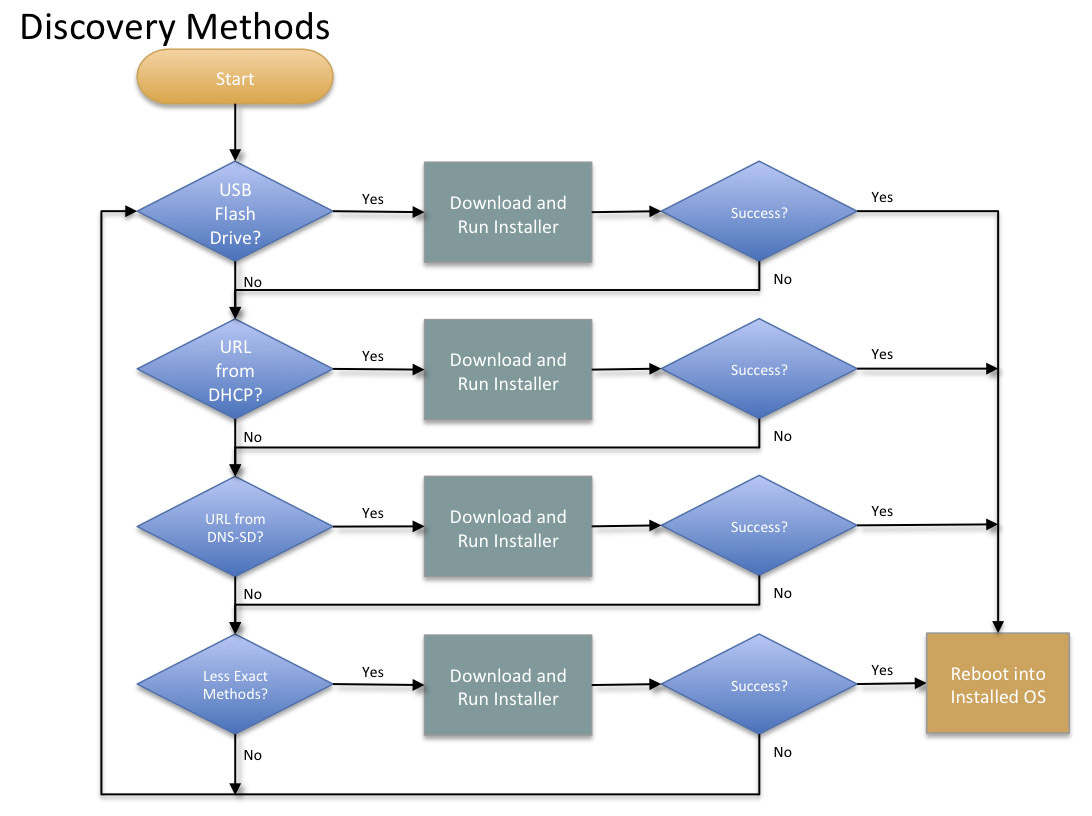
The advantages of this approach:
Switch Compatibility
The second important modern trend is the publication of an SDK for working with matrices that were previously marked as 3rd party closed. Mellanox Open Ethernet , Broadcom OF-DPA SDK , Intel threatens to publish its ONS and toolkit in source code.
Spread to the masses
Not without the ubiquitous Facebook, ONIE was given to the Open Compute project for the development of a truly open network infrastructure. Principles do not allow Facebook to pay traditional vendors. :)
Several companies have already made switches and published specifications on the Networking / SpecsAndDesigns website.
Not forgotten, and the software part:
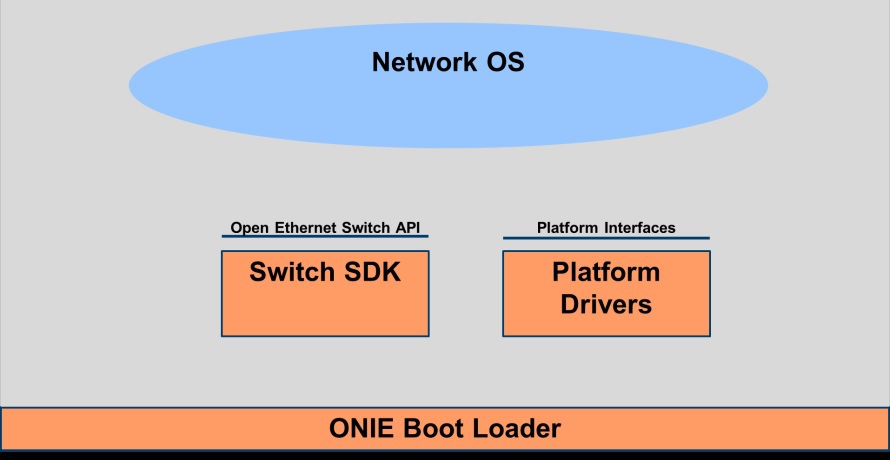
General idea
As part of OCP, the Open Network Linux project has been launched, on the basis of which it is proposed to build ready distributions for various switches. It's funny that ONL does not directly support packet processing, since it does not initialize the matrix. Only control part:
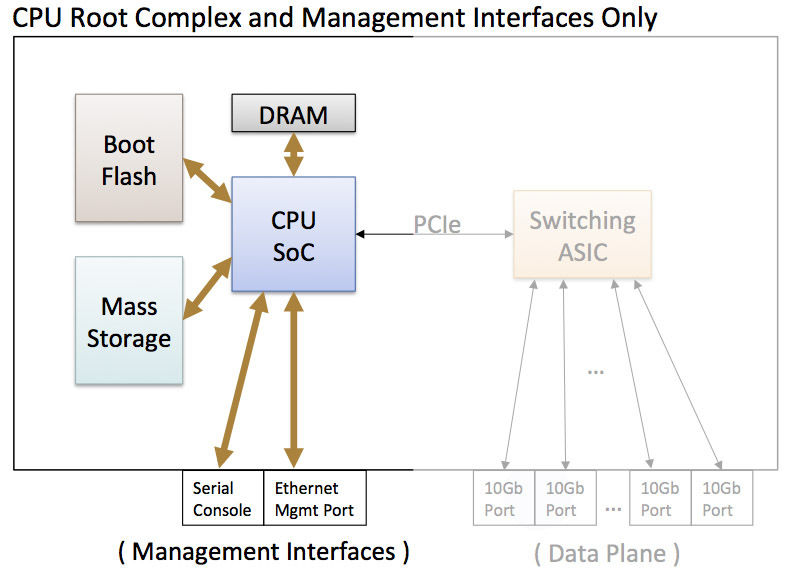
However, publishing an SDK allows you to build a distribution kit yourself. Just add the packages you need.
As a result, they want to make a server with a matrix driver out of the switch:

Commutator of the future
Control Plane selection
A large part of modern switches runs on PowerPC processors, some work on x86, someone loves MIPS or ARM. In some developments, it is already proposed to place the processor on a separate card, so that it will be possible to choose between processors, NOS distributions and available applications.
Future
Facebook is not sitting still and has already proposed the concept of a modular switch , calling it OCP Stage II.
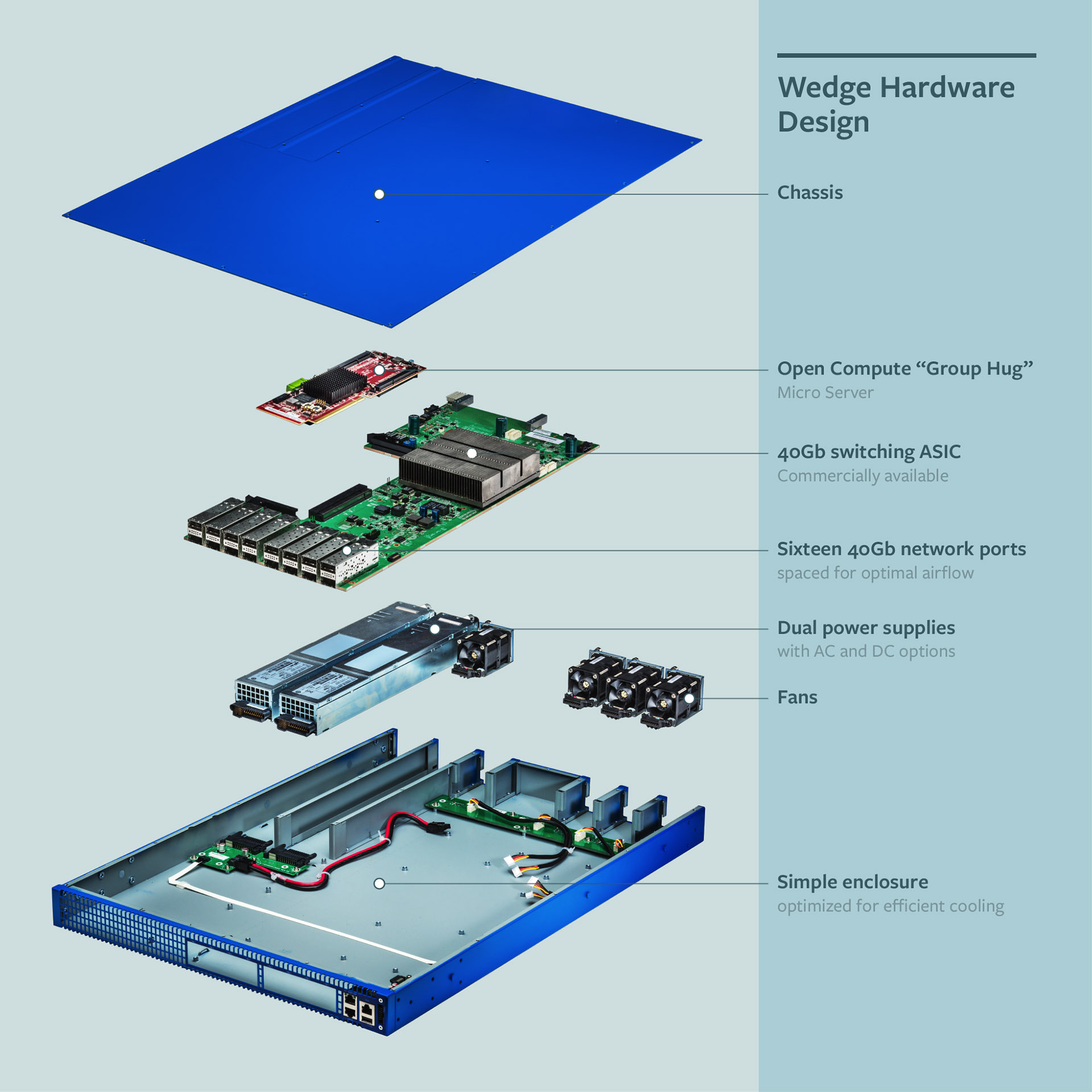
The Control Plane was made on the basis of the Group Hug microserver family (Intel, AMD, ARM to choose from), which made it possible to integrate the switch management into a single FB system. In addition to controlling the OS itself, it became possible to monitor the hardware state of the switch in the same way as the server. Temperature, voltage, condition of the fans - everything can be seen in the usual way. In general, while some (we will not point fingers) invent complex control systems for switches and servers at the same time, others simplify switches to the level of servers.
The software part, called FBOSS, is unified with the servers. Control of the matrix goes through the level of abstraction, the network can be managed as another service. All admins suddenly became network admins :)
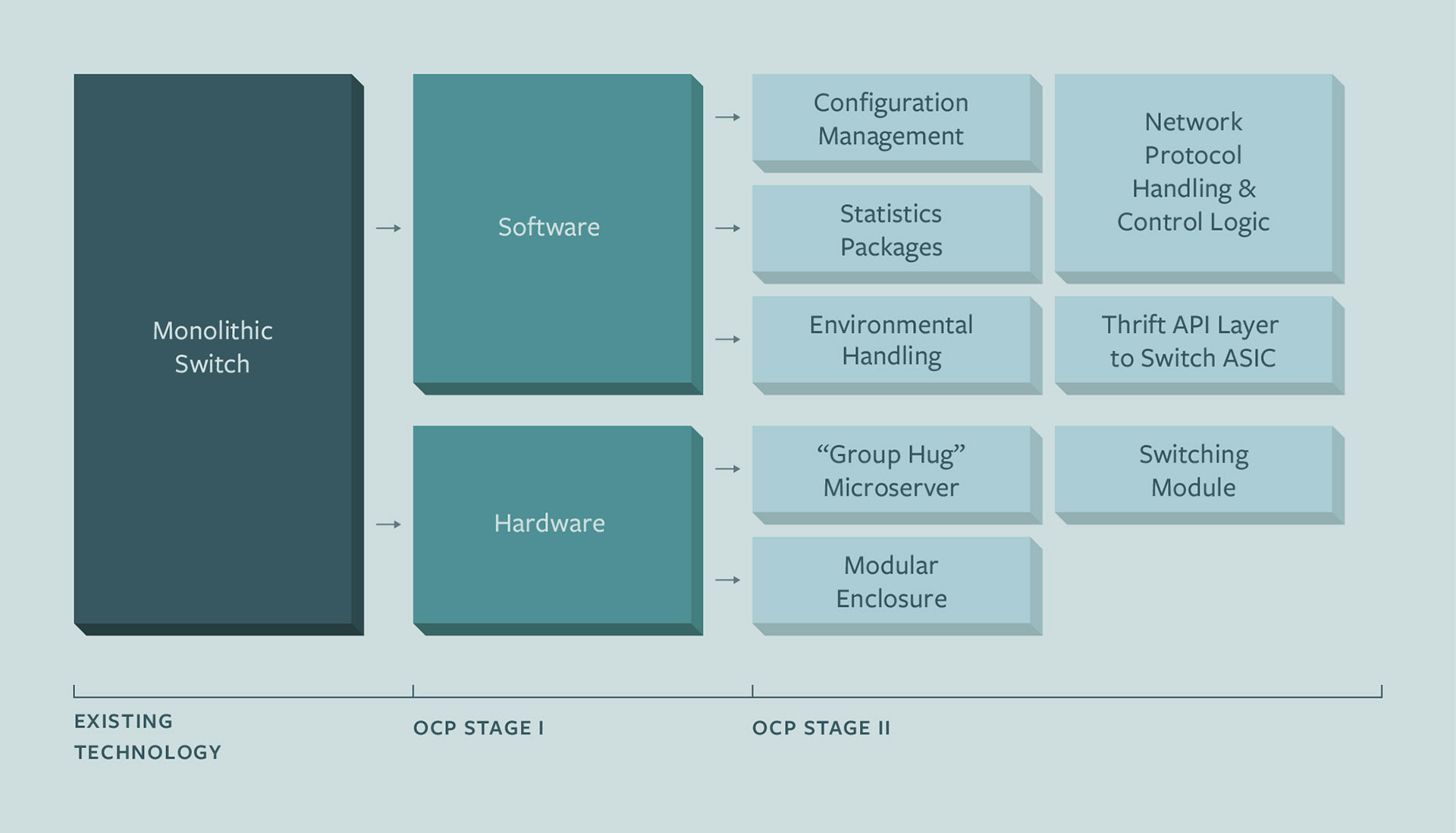
This example is likely to be picked up by manufacturers and we will see more modular designs in the future.
Our participation
We decided not to stand aside and a number of models were made available as a Bare Metal Switch with ONIE preinstalled.
The list includes:
Eos 220 - 48x 1G Base-T, 4x 10G SFP +, dual power supply. Cumulus Linux, Open Network Linux, BigSwitch Switch Light, Pica8 supported

Eos 400 - 48x 10G SFP +, 4x 40G QSFP +, dual power supply. Cumulus Linux, Open Network Linux, BigSwitch Switch Light, Pica8 are supported.

Eos 420 - 48x 10G SFP +, 6x 40G QSFP +, dual power supply. Cumulus Linux, Open Network Linux, BigSwitch Switch Light are supported.

Eos 520 - 32x 40G QSFP +, dual power supply. Supported by Cumulus Linux.

And that's not counting the switch Eos 410i - 48x 10G SFP +, 4x 40G QSFP +, dual power supply. Only Intel ONS is supported, but an extremely flexible matrix. We hope that soon we will be able to announce the availability of source codes and tools.
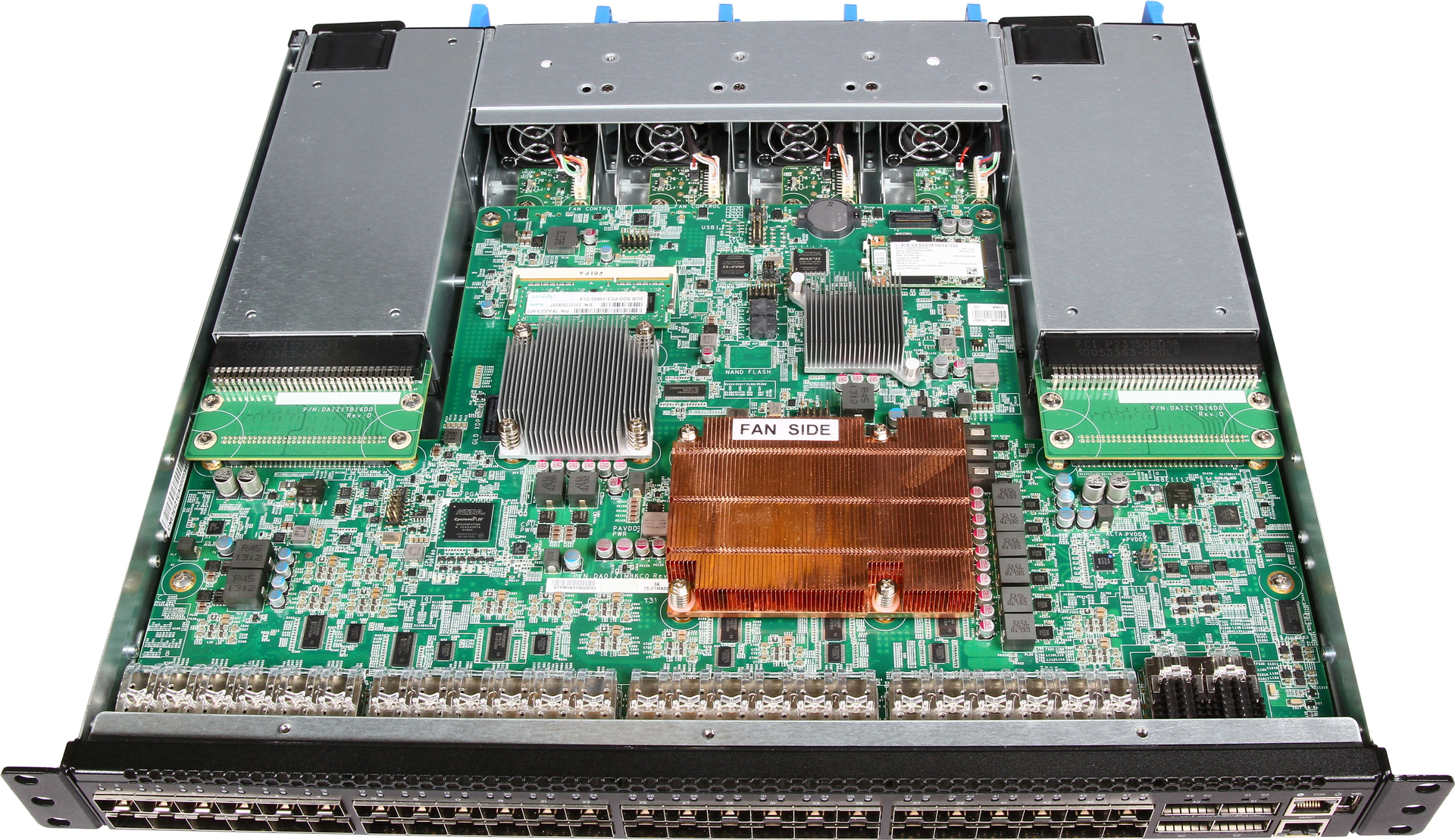
The network market (we are talking about an enterprise) is much more conservative. There are a couple of dominant companies, there are all the rest. Each vendor has its own OS, its own set of dearly beloved and cherished bugs, usual workarounds for them, its own command line (although some have combined with a single CLI). All yours.
Some time ago there was an opinion that the market lacks Linux to speed up development.
')

The server can be purchased with the OS and without, you can choose the configuration for the requirements of the applications, you can choose any OS distribution kit or build your own. The choice is rich, and this is what made it possible to develop a new business model, which formed the basis for the success of many Internet companies. A lot of software development appeared, the Open Compute project was launched to optimize server hardware
And what happened in the network equipment? How were switches managed almost 20 years ago and how are they now?

Nothing has changed
Years go by, and there has been no change. Yes, now the movement towards OpenFlow and SDN has begun, but network vendors continue to offer private options under the name of open. Many vendors develop their OS based on Linux, but nobody uses just Linux.
In 2010, a couple of startups, BigSwitch Networks and Cumulus Networks, were formed to develop such a solution. In 2012, Pica8 joined them.

Network operating system
Obvious difficulties on this path are the need to create an image for a specific switch and complex installation methods, because each switch can have its own loader.
Difficult installation methods
To circumvent this limitation, the Open Network Installation Environment (ONIE) was developed. In fact, this is a pre-installed microlenux, which, when first loaded, searches for a source to install a full-fledged network OS (NOS).

The advantages of this approach:
- Environment to install any network OS.
- Automate switch management.
- Manage switches as Linux servers.
Switch Compatibility
The second important modern trend is the publication of an SDK for working with matrices that were previously marked as 3rd party closed. Mellanox Open Ethernet , Broadcom OF-DPA SDK , Intel threatens to publish its ONS and toolkit in source code.
Spread to the masses
Not without the ubiquitous Facebook, ONIE was given to the Open Compute project for the development of a truly open network infrastructure. Principles do not allow Facebook to pay traditional vendors. :)
Several companies have already made switches and published specifications on the Networking / SpecsAndDesigns website.
Not forgotten, and the software part:

General idea
As part of OCP, the Open Network Linux project has been launched, on the basis of which it is proposed to build ready distributions for various switches. It's funny that ONL does not directly support packet processing, since it does not initialize the matrix. Only control part:

However, publishing an SDK allows you to build a distribution kit yourself. Just add the packages you need.
As a result, they want to make a server with a matrix driver out of the switch:

Commutator of the future
Control Plane selection
A large part of modern switches runs on PowerPC processors, some work on x86, someone loves MIPS or ARM. In some developments, it is already proposed to place the processor on a separate card, so that it will be possible to choose between processors, NOS distributions and available applications.
Future
Facebook is not sitting still and has already proposed the concept of a modular switch , calling it OCP Stage II.

The Control Plane was made on the basis of the Group Hug microserver family (Intel, AMD, ARM to choose from), which made it possible to integrate the switch management into a single FB system. In addition to controlling the OS itself, it became possible to monitor the hardware state of the switch in the same way as the server. Temperature, voltage, condition of the fans - everything can be seen in the usual way. In general, while some (we will not point fingers) invent complex control systems for switches and servers at the same time, others simplify switches to the level of servers.
The software part, called FBOSS, is unified with the servers. Control of the matrix goes through the level of abstraction, the network can be managed as another service. All admins suddenly became network admins :)

This example is likely to be picked up by manufacturers and we will see more modular designs in the future.
Our participation
We decided not to stand aside and a number of models were made available as a Bare Metal Switch with ONIE preinstalled.
The list includes:
Eos 220 - 48x 1G Base-T, 4x 10G SFP +, dual power supply. Cumulus Linux, Open Network Linux, BigSwitch Switch Light, Pica8 supported

Eos 400 - 48x 10G SFP +, 4x 40G QSFP +, dual power supply. Cumulus Linux, Open Network Linux, BigSwitch Switch Light, Pica8 are supported.

Eos 420 - 48x 10G SFP +, 6x 40G QSFP +, dual power supply. Cumulus Linux, Open Network Linux, BigSwitch Switch Light are supported.

Eos 520 - 32x 40G QSFP +, dual power supply. Supported by Cumulus Linux.

And that's not counting the switch Eos 410i - 48x 10G SFP +, 4x 40G QSFP +, dual power supply. Only Intel ONS is supported, but an extremely flexible matrix. We hope that soon we will be able to announce the availability of source codes and tools.

Source: https://habr.com/ru/post/227897/
All Articles